All about the large-flowered purslane

Large-flowered purslane is one of the most successful plants for landscaping and decoration of the site. Growing with a spectacular carpet, culture fills the space, hiding bald spots and bare areas in the garden. In addition, the plant is absolutely unpretentious in terms of care.
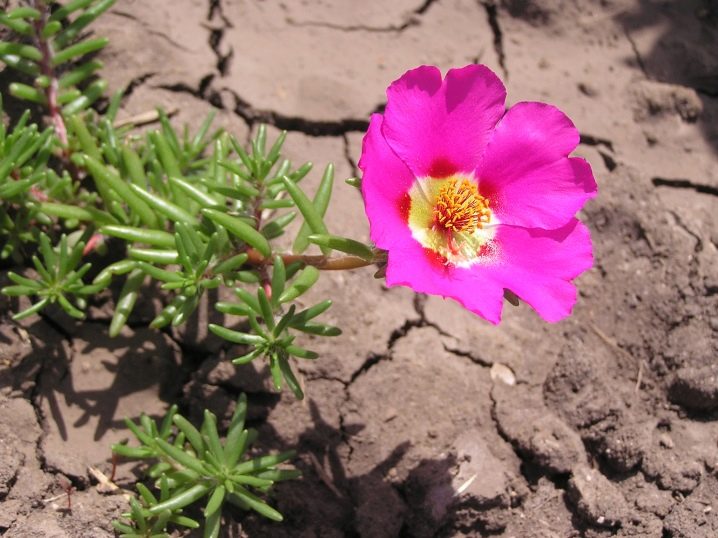
What it is?
Large-flowered purslane belongs to the Purslane family. This plant is native to Brazil. In its natural habitat, the culture prefers a tropical climate, but it takes root well in other conditions, however, as an annual.
The height of the flowers is about 0.2 meters. Creeping shoots, elongated foliage, lanceolate, small in size. Covers the plant abundantly. The flowers are large, very beautiful; they grow on the stems from the middle of summer until the first cold snaps. The average flower diameter is 5 centimeters.
The colors vary, depending on the variety. So, most often there are white, purple, pale pink, sunny shades.
It is worth noting that flowering depends on the weather. If the summer is rainy, the culture will grow poorly, and you may not wait at all for flowering.
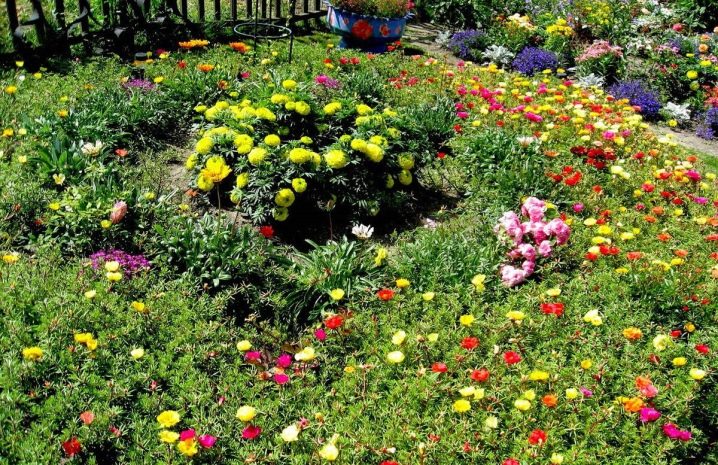
The large-flowered species has several varieties. All of them can be conventionally divided into three broad categories.
- With simple flowers. These are smooth, delicate flowers in a wide variety of shades. Mostly presented in white, pink, crimson tones. There are also yellow variants.
- With semi-double. They are a hybrid variety. The flower petals are overall, painted in different shades of red.
- With terry. The most interesting varieties with large showy flowers. They look most beautiful when grown with a solid carpet. In this case, it is recommended to use different colors.
In Russia, summer residents most often choose varieties such as Margarita, Tequila, Coral Reef, Sun Princess, Pink Haze, Illusion.
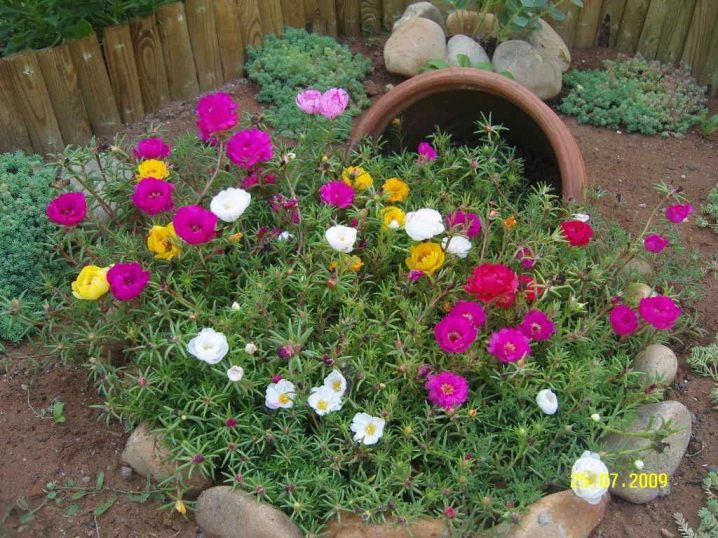
Landing
It is quite possible to grow a purslane from seeds. It should be noted, however, that seeds should be about 6 months old, earlier specimens will not be able to hatch... Seeds can be bought already harvested or collected at your site if you have previously grown purslane.
But it is worth considering that flowers are much less spectacular from self-collected material.
Sowing material can be planted on seedlings or directly into open ground. Let's analyze both methods step by step.
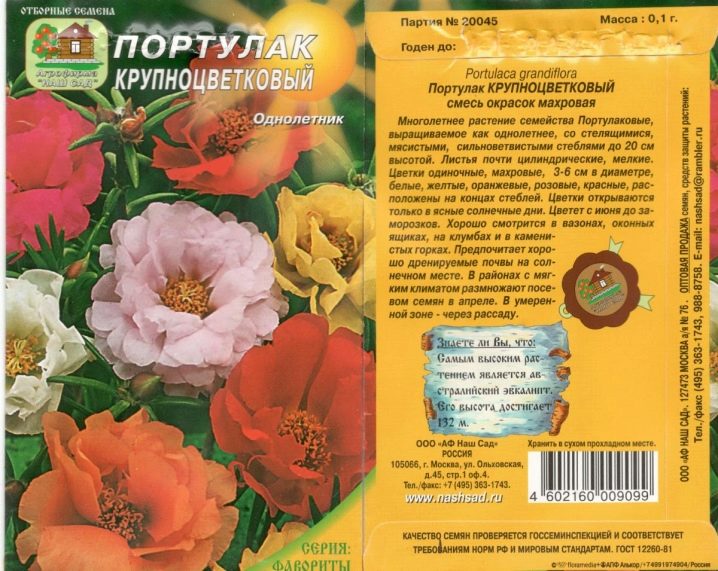
Seedling
This method will allow you to get beautiful flowers at the beginning of summer. To meet the deadline, the seeds are planted around mid-March. If the region is very warm, then it is possible at the beginning of the month to avoid overgrowing the seedlings. The soil is taken lightweight, with sand, but without peat. Ordinary garden soil is a good option. It is not recommended to purchase ready-made substrates for this plant.
The landing container should be wide but low. At the bottom, holes are arranged for direct passage of water, as well as a drainage layer. Next, the container is filled with soil, which is moistened with a spray bottle. The seeds should not be buried, it is enough just to spread them on the surface, lightly sprinkling them with a sandy layer. The step between the grains is 1 centimeter.
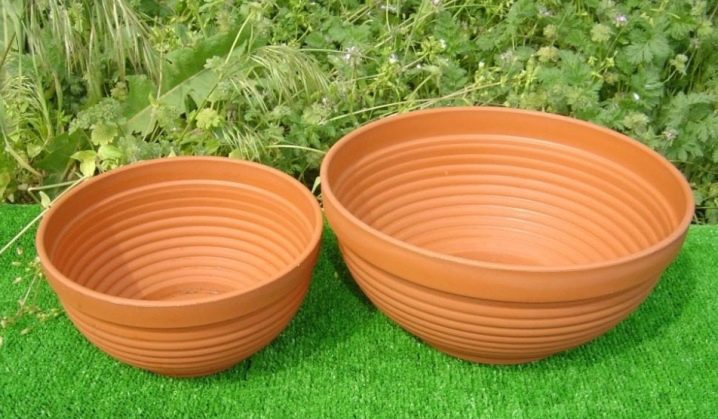
After planting, the container is tightened with a film and placed in a warm place with a temperature of 25-30 degrees. The crops are aired daily, moistened as needed. Provide long daylight hours, this is important for purslane. After germination, the shelter is removed. On average, the emergence of sprouts should be expected for 7-10 days.
Further, the seedlings are continued to look after, regularly watering. It is best not to spray the seedlings, but to place the container on a tray filled with water. Daylight hours, as before, should be long. After the appearance of the third leaf, the seedlings dive in separate pots together with an earthen lump, deepening to the cotyledonous leaf.
From this point on, you can slowly begin to harden the sprouts. It is customary to plant them in open ground in late May - early June.
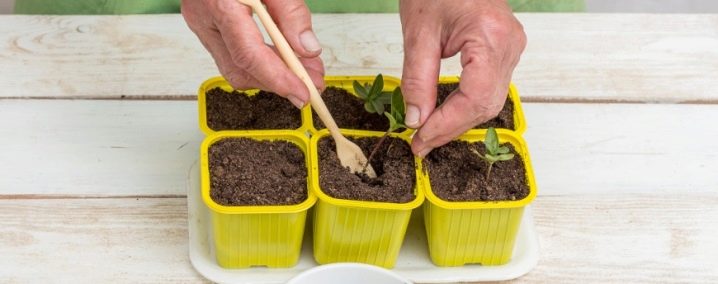
Sowing directly into the soil
You can also plant grains by direct sowing into the ground. This is done at the same time as the transplant of ready-made seedlings. In both cases, a warm and maximally sunny place is chosen for the large-flowered purslane. The plant does not like wind, shade, damp earth. The soil may even be poor, the main thing is not waterlogged.
The seeds should be planted on a warm, dry day at a substrate temperature of 20-25 degrees. As in the previous case, the seeds are simply placed on the surface, slightly covered with sand. Before doing this, it is important to water the ground. Placed samples are covered with foil until sprouts appear. Care is the same as for seedlings. When the seedlings grow up to 3 centimeters, the plantings are thinned out, planting the bushes in a permanent place. Usually the distance between them is 10 cm, but 15 cm should be left between the rows.
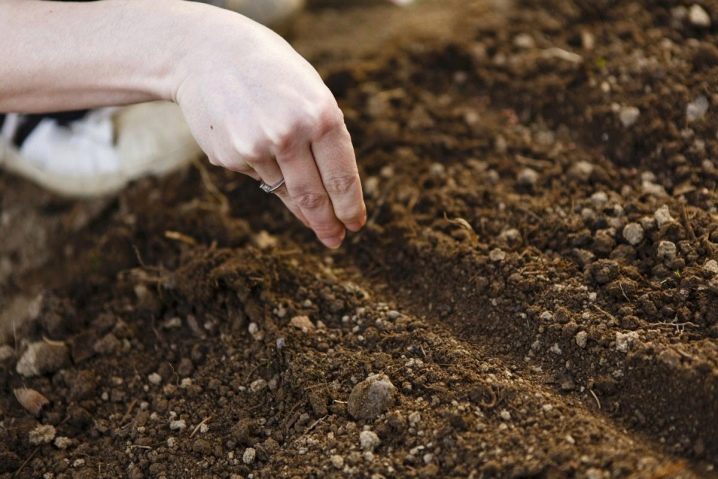
Care
Growing purslane in a flower bed or garden will require a minimum of effort from the gardener... It is worth watering the flowers once a week, and then only in case of drought. Under normal conditions and with normal rainfall, this can be done less often. Purslane loves drought more than excessive moisture. All watering should be done with a shallow watering can. An interesting option would be a drip irrigation system.
Fertilizing purslane is not required. The plant feels great even in the poorest beds, which have not been prepared in any way since the fall. If you really want to, you can feed it once a season with a complex mixture for flowering plants.
It is also not necessary to loosen and weed the earth, since the flowers form a dense carpet, through which it is impossible to break through.
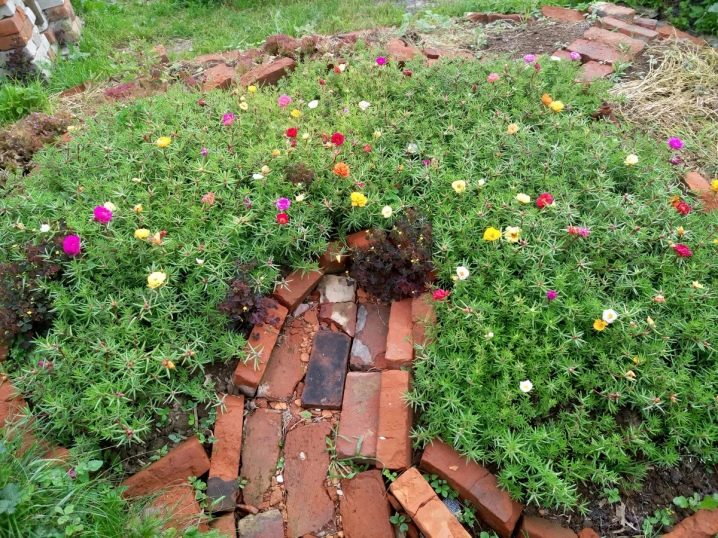
As for diseases, in the case of purslane, this is a very rare occurrence. The only thing he can get sick with in general is rot. But it will appear only during cold and rainy summers, as well as excessive watering. From insects, the crop can be attacked by aphids.
Special attention should be paid to the collection of seeds... Purslane multiplies by self-seeding, and if the capsule bursts, the grains will scatter throughout the area. If you do not want to later withdraw purslane, then self-seeding should be prevented by collecting the grains yourself. As a rule, gathering is done in the middle of summer. You can understand that the right time has come by the yellowing of the seed pod.
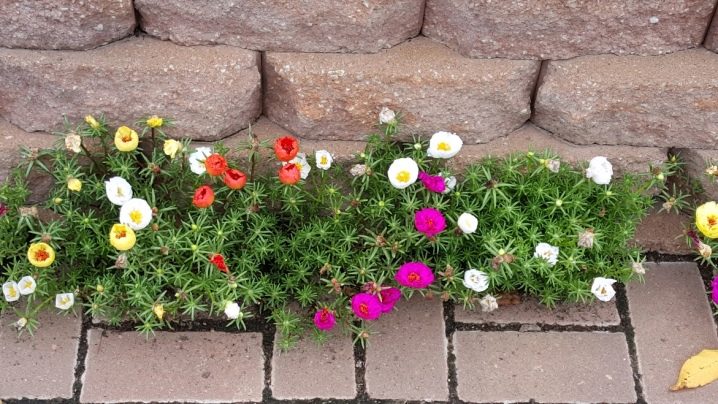








The comment was sent successfully.